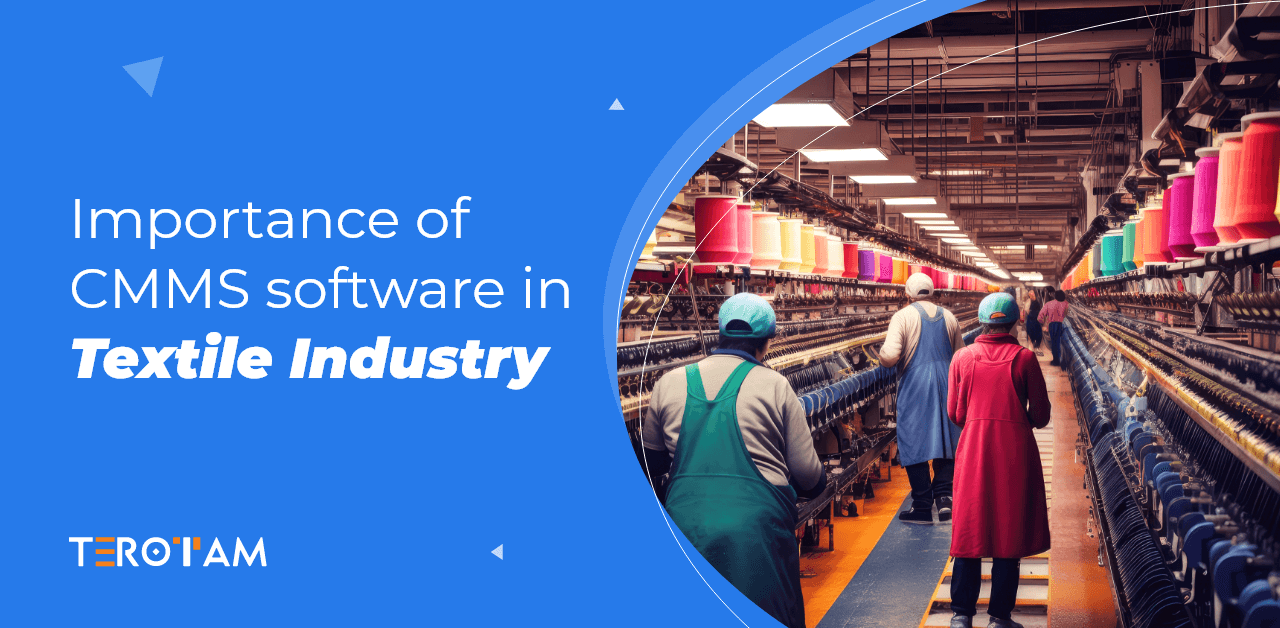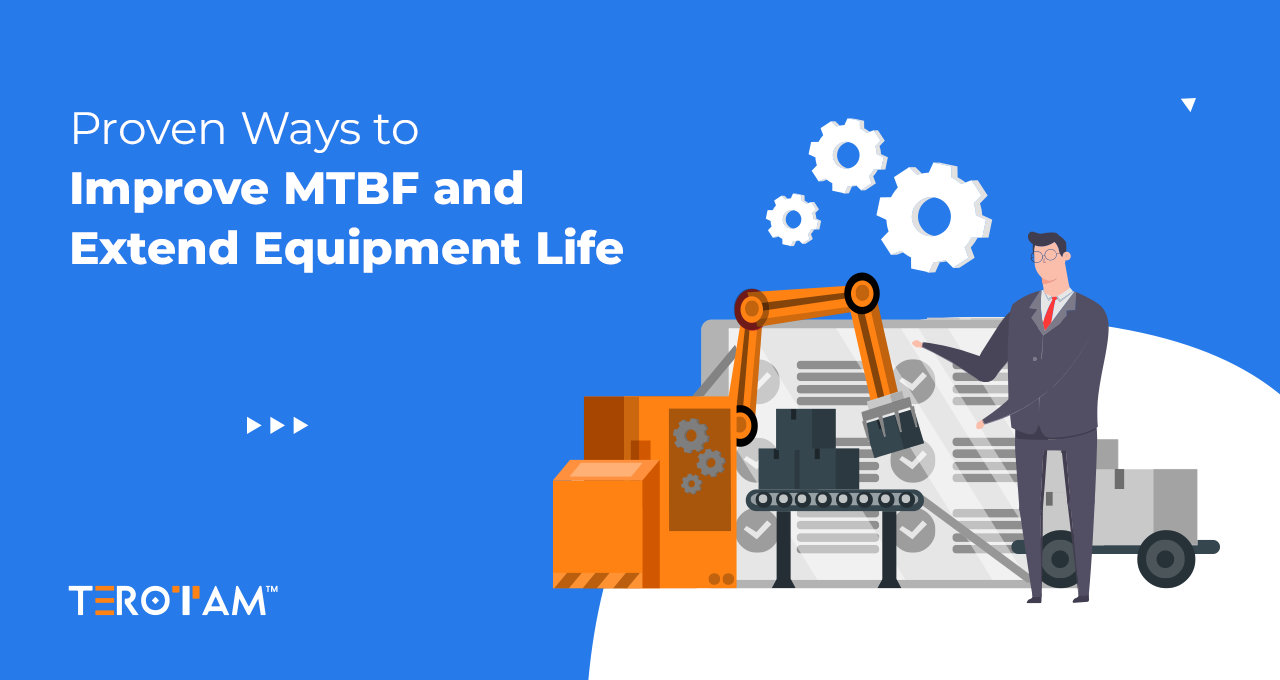The Textile Industry is one of the businesses that intensively uses machinery such as power looms, spinning machines, dyeing mechanisms, gray folding machines, quality check machines, packaging and labeling, and the list goes on. Almost every task in the process involves machines and instruments, and stoppage causes downtime that costs the business in multiple ways.
Loaded with such a heavy dependency on machines and equipment, unplanned breakdowns and downtimes are totally unaffordable. But, this is the problem the majority of manufacturers in the textile industry faces and that is where they have the need of a systematic solution that stops such incidents.
In this article, we will examine the challenges that become roadblocks for textile manufacturers and how a CMMS system can be a one-stop solution for them.
Let’s have a look.
Major Challenges in the Textile Industry
As we have seen above, the Textile industry is surrounded by machines and equipment in every department and can’t afford downtime. However, this industry faces multiple challenges in its regular operational life.
Let’s examine them and understand how they are pain points in the textile business.
1. Frequent breakdowns of equipment
Continuous production pressure coupled with high-stress levels under which textile machines operate causes frequent breakdowns. Spinning wheels, looms, processing equipment among others tend to wear out easily due to usage leading to machine stoppages not only at that particular moment but also throughout their shortened lifespans thereby increasing maintenance costs. Managing such failures so that they do not interfere with the production schedule is a major challenge.
2. Expensive Maintenance
Maintenance works within this industry may be expensive because they involve complex systems which need precision handling of textiles machineries. Costly spare parts together with skilled labor required during repairs could inflate budgets for maintenance on top of unplanned downtime caused by equipment failure which leads to huge financial loss through idle staff or missing deadlines thus straining financially more.
3. Obsolete Infrastructure
Many factories have old-fashioned machines and other facilities that are prone to frequent breakdowns. Upgrading or replacing these machines with new models can be costly hence unaffordable for some manufacturers hence efficient running of older machines while maintaining output standards poses a big problem.
4. Compliance With Safety And Environmental Regulations
Different processes involved in textile manufacturing can endanger both workers’ lives and environment itself hence strict compliance with safety rules becomes necessary whereby continuous monitoring programs plus regular checks on machinery should be done in order ensure their conformity to set standards otherwise failing so may attract legal actions against offenders accompanied by negative publicity towards affected companies as well.
5. Lack of Skilled Maintenance Personnel
The industry often lacks competent individuals who can diagnose complex issues about machines used for maintenance. Textile machines are unique in their own way therefore broad knowledge coupled with experience is highly required but finding such skilled personnel becomes increasingly difficult due to changing times. This leads to delays in critical repairs or even failure to do certain maintenance work which further increases down time thus reducing production efficiency.
6. Ineffective Timing for Maintenance
The challenge lies on how best one can coordinate maintenance activities without interfering much into the production schedules. Badly timed repairs may interrupt manufacturing process when it is most needed leading to poor quality outputs whereas good balance between health of equipment through frequent checks against meeting high targets during usage should be established so that successful planning strategies aimed at achieving this objective can be developed by managers within involved organizations.
7. Too much Focus on Reactive Maintenance
The majority of textile manufacturers still use a reactive strategy where they wait until something breaks down before fixing it. However, this approach requires more money and takes a longer period of time than preventive or predictive methods since initial investment in training may have to be made together with acquiring relevant technology as well culture change within an organization has also got involved here though useful over long run.
How CMMS Software Can Solve Maintenance Challenges in the Textile Industry?
The CMMS solution is a well-designed system that addresses all the unique challenges that have been addressed above in the textile industry. With its systematic approach and automation technology, it enhances effectiveness and efficiency and ensures uninterrupted operations.
Here’s how CMMS can be an important solution to the issues discussed:
Streamlining Maintenance Management with Work Automation
With its capability of automating the important functions like maintenance scheduling, asset and maintenance work tracking and execution of such maintenance work. It empowers the maintenance team to plan and execute a preventive maintenance program that ensures the on time maintenance of equipment with pre-decided frequency to lower the risk of unplanned breakdown. It also lets you schedule the maintenance task at such times where maintenance activity also doesn’t result in downtime and without disturbing the operation time, it keeps the equipment up and running when it is required.
Reducing Maintenance Costs
With reactive maintenance approaches, the maintenance cost is high. This is a unanimously accepted truth now. As it asks for immediate action, cost of priority counts, it gives downtime during operational hours that causes the production delays and also counts for opportunity cost. With preventive maintenance scheduling with CMMS, the maintenance team can avoid sudden breakdowns that cause all such costs as it ensures the machine is in the best of its conditions during operational hours and in idle time it goes through maintenance based on pre-decided maintenance frequency.
Managing Aging Infrastructure Efficiently
If you need a longer life span of a machine you must have all relevant data that tells you about its maintenance and repair history, frequency, and repetitive reasons of failure. Technically speaking, you must have MTTF, MTTR, MTBF and RCA details with you to decide when and how to provide maintenance schedules for that machine. With such data driven decisions, your machines stay breakdown free with good conditions to work. Also, if these ratios are higher than expected or standard, you can decide on replacement rather than repair.
Ensuring Compliance with Regulations
In today’s regulatory framework, only maintenance is not enough. You must carry out these maintenance activities according to the latest safety and environmental standards. CMMS software can store compliance records and documents, and according to the standards, you can create a maintenance checklist that needs to be followed while performing maintenance so it stays in compliance.
With all the records and reports, it helps you stay compliance-ready and makes it easy to produce evidence during the audits. With timely alerts, detailed documentation, and a checklist, it helps you not forget the major compliance points to avoid any legalities.
Shift from Reactive to Preventive to Predictive Maintenance
Maintenance is a task that requires you to keep debugging. You need to stay as updated as required or else you will have to bear the cost. As we have seen earlier reactive maintenance gives you cost, you must adopt the preventive maintenance approach to cut on the frequency of reactive maintenance, but at the same time only preventive maintenance approach is not enough, in some cases and with some machines and important operations you even need better data-driven approach i.e., Predictive maintenance which a CMMS solution allows you to practice. Gathering and analyzing the data from sensors and machine usage it predicts the frequency and urgency of maintenance for optimizing machine performance and further reducing unplanned downtime.
Conclusion
Textile businesses that want to stand tall in the cutthroat competition of this time must decide on a system that streamlines their maintenance operations and cuts down the relevant maintenance cost with desired operational efficiency. What they must consider is a system like TeroTAM’s CMMS software that can simplify their maintenance practices and let them stay compliant effortlessly.
So, Don’t let your maintenance challenges be a road blocker for your operational excellence and growth. Connect with our experts now and explore how TeroTAM’s CMMS solution can be your one stop solution to grow your textile manufacturing business.








